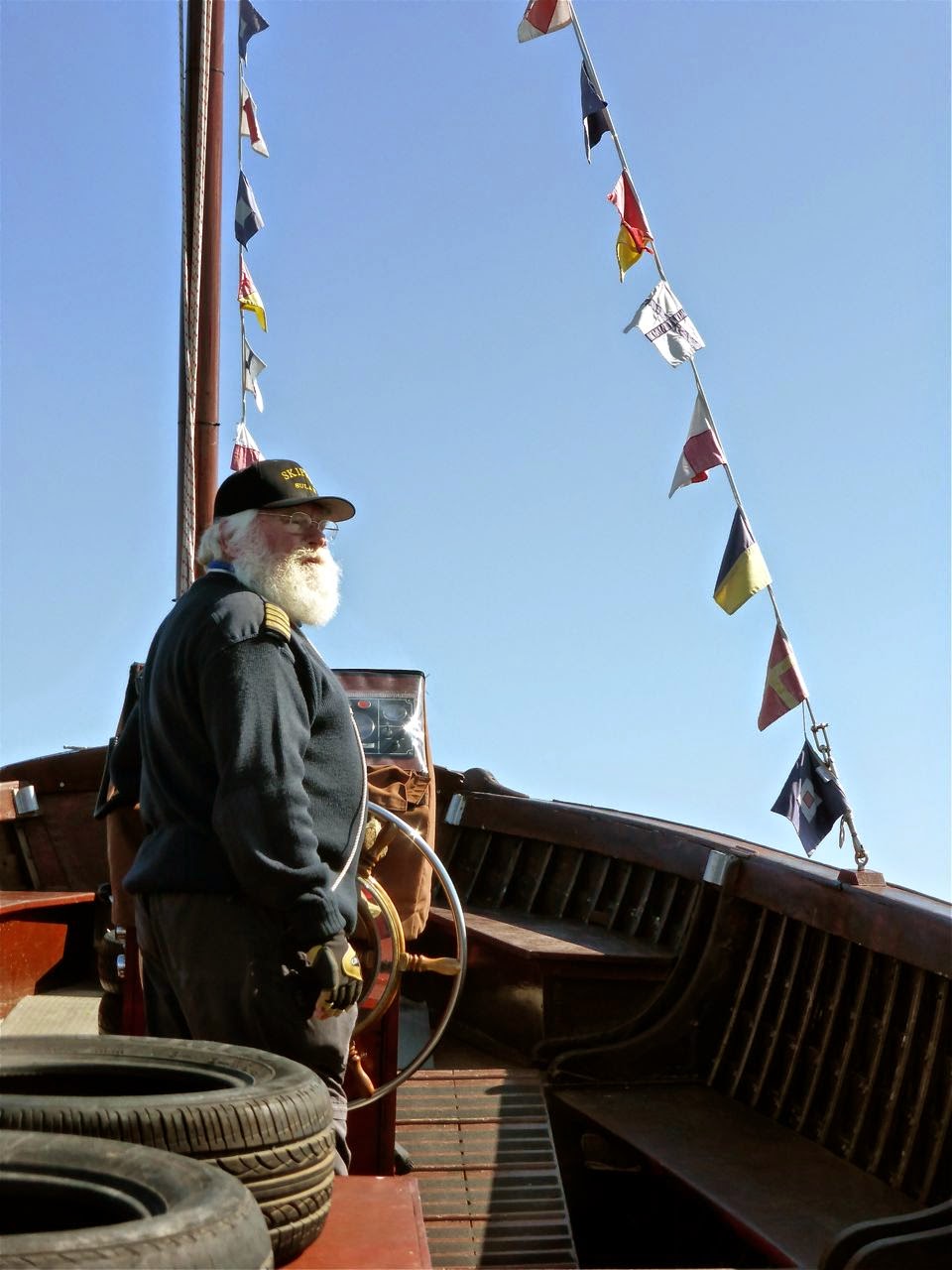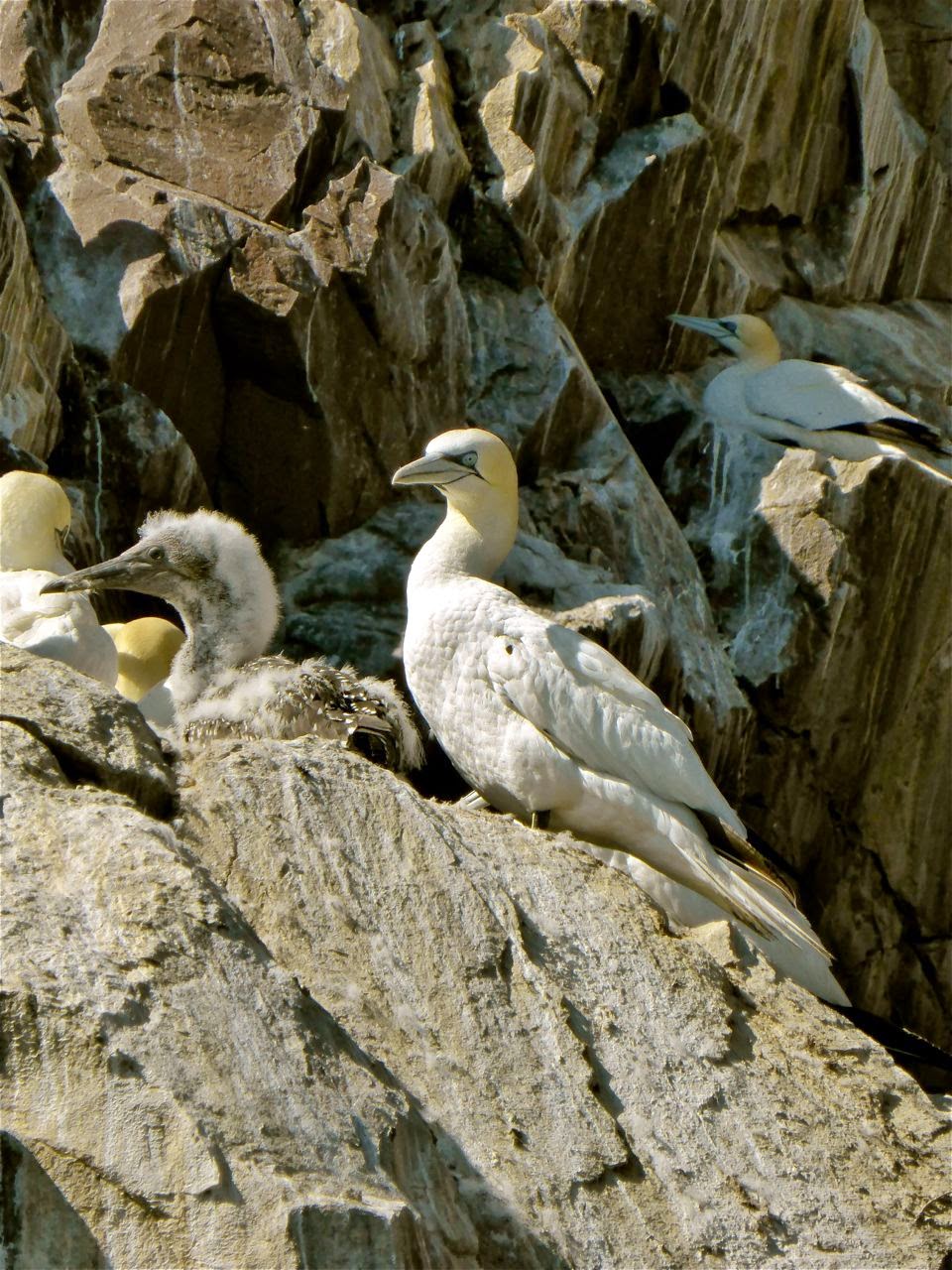Mr Gaucho and I took a trip out to the Bass Rock today. We went on the Sula II, the 12 noon sailing from North Berwick harbour.
The sun shone, the sea swell was bearable - I am no sailor. I love the sea, to be near it, listening to it, looking at it, photographing it, but not on it. But this was fine. We had a wonderful outing, safe in the hands of Captain Birdseye.
Craigleith is a favourite nesting place for puffins. Very sad to say we were over a month late to see them. They have all left by 20 July (my birthday), so next year we will keep that in mind and go back in May or June, when we will see them with their young ones - pufflings! Currently they are all bobbing about in the North Sea, where they will remain until next spring. They stay at sea all winter, which seems like a pretty grim prospect to me, but they have obviously worked out the logistics of it all, and seem happy with the arrangement.
And the waves were wonderful too.
The sun shone, the sea swell was bearable - I am no sailor. I love the sea, to be near it, listening to it, looking at it, photographing it, but not on it. But this was fine. We had a wonderful outing, safe in the hands of Captain Birdseye.
We waited for a short while with fellow passengers, before we climbed abroad.
We left North Berwick behind as we headed out to sea and the small island of Craigleith.Craigleith is a favourite nesting place for puffins. Very sad to say we were over a month late to see them. They have all left by 20 July (my birthday), so next year we will keep that in mind and go back in May or June, when we will see them with their young ones - pufflings! Currently they are all bobbing about in the North Sea, where they will remain until next spring. They stay at sea all winter, which seems like a pretty grim prospect to me, but they have obviously worked out the logistics of it all, and seem happy with the arrangement.
Craigleith is also home to cormorants and shags, and we saw quite a number, sitting in the sun.
We sailed round Craigleith and then set off for the Bass Rock. The rock has an incredible history. It's well worth reading the Wikipedia entry : http://en.wikipedia.org/wiki/Bass_Rock even if you are unlikely to have the opportunity to visit this part of the world. It's amazing how much history a large lump of rock, in the middle of the sea, can record.
The Bass Rock is home to a huge colony of gannets. Their number, combined with the guano, turn the rock white.
I can't pretend to know much about gannets, except that it is fabulous to watch them from the East Lothian beaches, as they turn themselves into streamline darts to dive, at high speed, into the sea to catch fish. The Scottish Seabird Centre in North Berwick can tell you all you need to know about these beautiful birds here :
Every ledge, crag, surface is occupied by a gannet.
And the airspace around the rock is filled with gannets in flight.
This is the old fog horn, which no longer sounds on the Bass Rock. And the lighthouse is not functioning any more either. It's all, unromantically, controlled by a computer in a building on George Street in Edinburgh (https://www.nlb.org.uk/ourlights/automation.htm).
Captain Birdseye nosed Sula II into the mouth of this cave, which gave us a better view of the birds who had chosen to have a rather quieter nesting site, away from the rabble on every other surface of the rock.
The Bass Rock is a volcanic plug, jettisoned from the Edinburgh area, possibly Arthur's Seat? The rock continues down to the sea bed to the same depth as the height of the cliff above, and with the same profile.
Long ago an early Christian hermit lived on the rock, and then, in the 1400s, a castle was built in the south west side, which later become a prison.
We left the rock behind and headed back to North Berwick. Once we had docked we walked round the harbour and then back to the car, which was parked by the east beach.
The Sula II and her skipper were already preparing for the next gaggle of passengers for the 1.30 pm sailing. We knew they were all in for a treat.
The beach was a very busy place today. Lots of families enjoying the sunshine.
The British by the seaside. It's a classic sight.And the waves were wonderful too.

































This post has totally transported me to a boat bobbing about by a huge rock in the sea, I really enjoyed your stunning photos and a glimpse of another part of this great country x
ReplyDelete